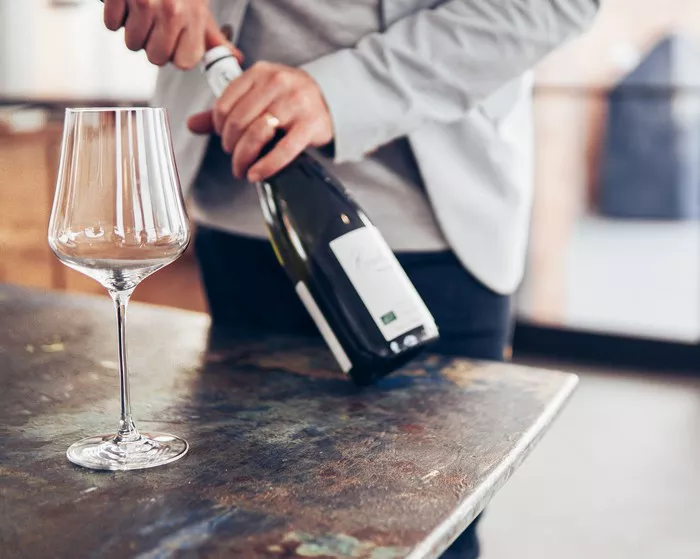Cabernet Sauvignon, with its rich history and bold flavors, stands as one of the world’s most celebrated red wines. Yet, even the finest bottles can benefit from a bit of enhancement to truly shine. Whether you’re a seasoned oenophile or a novice wine enthusiast, there are several strategies to elevate the taste of Cabernet Sauvignon. Let’s explore some expert techniques to make Cabernet Sauvignon taste better.
1. Start with Quality Grapes:
The foundation of any exceptional wine lies in the quality of its grapes. To make Cabernet Sauvignon taste better, begin with selecting grapes from reputable vineyards renowned for producing premium fruit. Opt for regions with optimal terroir for Cabernet Sauvignon cultivation, such as Bordeaux in France, Napa Valley in California, or Coonawarra in Australia. High-quality grapes ensure a solid base for crafting a superior wine, enhancing its depth, complexity, and overall flavor profile.
2. Embrace Proper Aging:
Aging plays a pivotal role in refining the taste of Cabernet Sauvignon. Proper aging allows the wine to develop its full potential, smoothing out harsh tannins and integrating flavors seamlessly. For young Cabernet Sauvignon wines, consider cellaring them for several years to allow for optimal maturation. Alternatively, seek out aged Cabernet Sauvignon bottles from reputable producers or wineries. Aging imparts nuanced characteristics, elevating the overall taste and complexity of the wine, thus making Cabernet Sauvignon taste better.
3. Decanting for Aeration:
Decanting is a simple yet effective technique to enhance the taste of Cabernet Sauvignon. Pouring the wine into a decanter exposes it to oxygen, allowing it to breathe and open up. This process softens harsh tannins and releases aromatic compounds, resulting in a smoother and more flavorful wine. To maximize the benefits of decanting, allow the wine to aerate for at least 30 minutes before serving. The increased aeration not only improves the taste but also enhances the wine’s bouquet and overall drinking experience, making Cabernet Sauvignon taste better.
4. Serve at the Ideal Temperature:
Temperature significantly influences the taste of wine, including Cabernet Sauvignon. Serving the wine at the correct temperature ensures that its flavors are showcased at their best. For most Cabernet Sauvignon wines, the ideal serving temperature ranges between 60°F to 65°F (15°C to 18°C). Cooler temperatures can mute the wine’s flavors, while warmer temperatures can accentuate alcohol and diminish subtleties. Investing in a wine thermometer or utilizing a wine refrigerator can help achieve precise temperature control, ultimately enhancing the taste of Cabernet Sauvignon.
5. Pairing with Complementary Foods:
The right food pairing can elevate the taste of Cabernet Sauvignon, bringing out its inherent flavors and nuances. Opt for dishes that complement the wine’s boldness and structure, such as grilled meats, hearty stews, aged cheeses, or dark chocolate desserts. The richness and tannic grip of Cabernet Sauvignon harmonize beautifully with savory, protein-rich foods, creating a symphony of flavors on the palate. Experimenting with different food pairings allows for a delightful culinary experience, enhancing the overall enjoyment and making Cabernet Sauvignon taste better.
6. Blending for Complexity:
Blending is a winemaking technique employed to enhance complexity and balance in wines, including Cabernet Sauvignon. Winemakers often blend Cabernet Sauvignon with other grape varieties, such as Merlot, Cabernet Franc, Petit Verdot, or Malbec, to achieve desired flavor profiles. Each grape contributes unique characteristics, adding layers of complexity and depth to the final blend. Blending allows for greater control over the wine’s taste and structure, resulting in a more harmonious and well-rounded expression of Cabernet Sauvignon, thus making it taste better.
see also: What does unoaked chardonnay taste like?
7. Proper Glassware Selection:
The choice of glassware can significantly impact the taste and aroma of Cabernet Sauvignon. Opt for large-bowled glasses with a tapered rim to concentrate the wine’s aromas and direct them towards the nose. The ample surface area allows for optimal aeration, enhancing the wine’s bouquet and flavor profile. Additionally, crystal glasses with thin rims provide a smoother drinking experience, allowing the wine to glide effortlessly across the palate. Investing in high-quality glassware can elevate the sensory experience, accentuating the nuances and making Cabernet Sauvignon taste better.
8. Explore Terroir Variations:
Cabernet Sauvignon is cultivated in diverse regions around the world, each imparting its unique terroir characteristics to the wine. Exploring Cabernet Sauvignon from different terroirs allows for a fascinating journey of discovery, unveiling a spectrum of flavors and expressions. From the gravelly soils of Bordeaux to the volcanic slopes of Chile, each terroir infuses the wine with distinct mineral nuances, fruit profiles, and structural elements. By exploring terroir variations, wine enthusiasts can broaden their palate and deepen their appreciation for the diverse flavors of Cabernet Sauvignon, ultimately making it taste better.
9. Practice Patience:
Patience is key when it comes to enjoying Cabernet Sauvignon at its best. Allow the wine ample time to breathe, evolve, and reveal its true character. Avoid rushing through the tasting experience; instead, take the time to savor each sip, allowing the wine to unfold its layers of complexity gradually. With patience, one can fully appreciate the nuances and subtleties of Cabernet Sauvignon, leading to a more rewarding and enjoyable drinking experience. Embracing patience is essential in unlocking the full potential and making Cabernet Sauvignon taste better.
In Conclusion
There are numerous strategies to make Cabernet Sauvignon taste better, ranging from selecting quality grapes to exploring diverse terroirs, embracing proper aging, and practicing patience. By incorporating these expert techniques into your wine appreciation journey, you can elevate the taste and enjoyment of Cabernet Sauvignon to new heights. Whether you’re indulging in a bottle with friends or adding to your cellar collection, these tips will undoubtedly enhance your experience and leave you savoring every sip of this iconic red wine. Cheers to unlocking the full potential of Cabernet Sauvignon!


